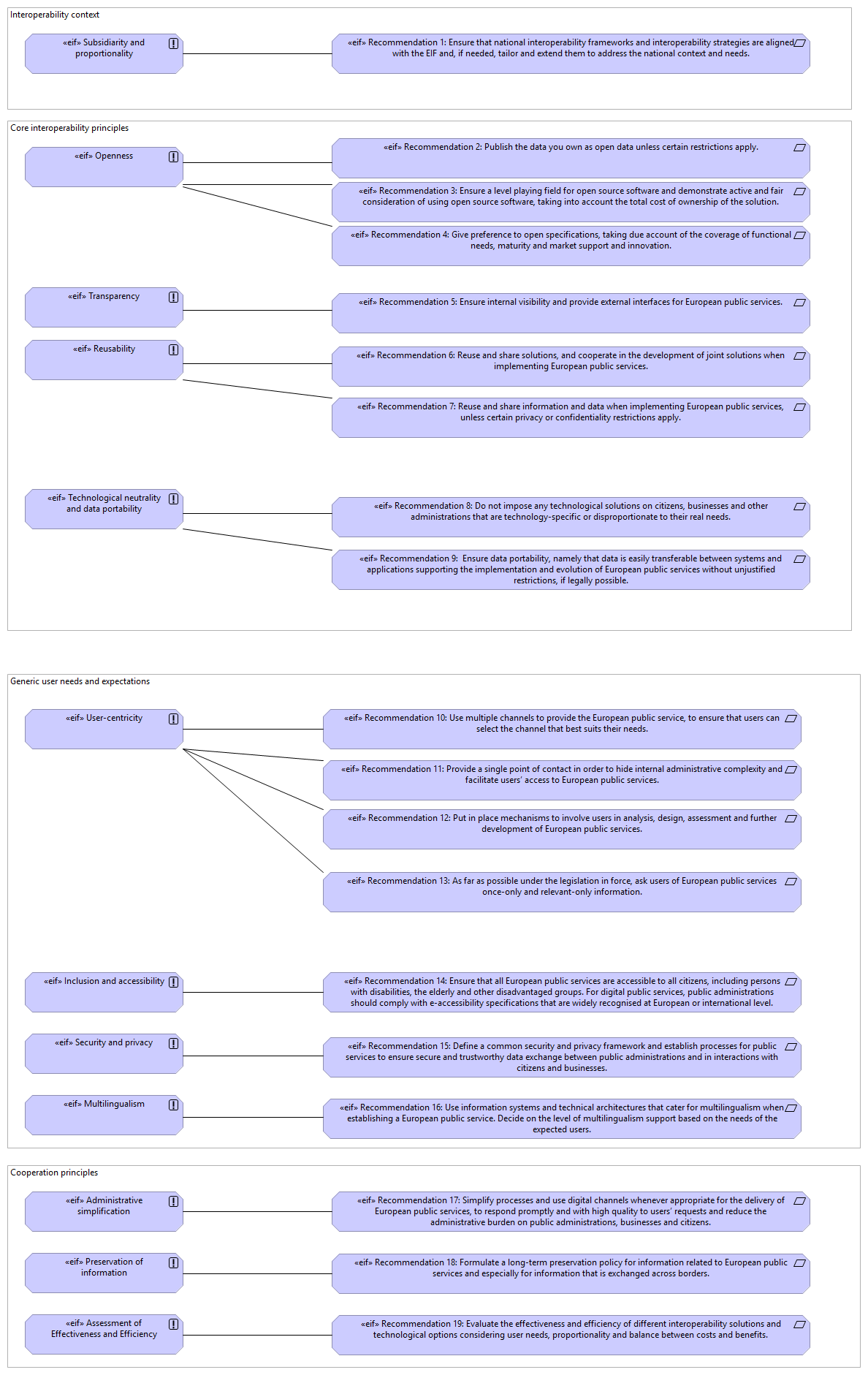| |
|
Subsidiarity and proportionality |
Recommendation 1: Ensure that national interoperability frameworks and interoperability strategies are aligned with the EIF and, if needed, tailor and extend them to address the national context and needs. |
| |
|
Openness |
Recommendation 4: Give preference to open specifications, taking due account of the coverage of functional needs, maturity and market support and innovation. |
| |
|
Openness |
Recommendation 2: Publish the data you own as open data unless certain restrictions apply. |
| |
|
Openness |
Recommendation 3: Ensure a level playing field for open source software and demonstrate active and fair consideration of using open source software, taking into account the total cost of ownership of the solution. |
| |
|
Transparency |
Recommendation 5: Ensure internal visibility and provide external interfaces for European public services. |
| |
|
Reusability |
Recommendation 7: Reuse and share information and data when implementing European public services, unless certain privacy or confidentiality restrictions apply. |
| |
|
Reusability |
Recommendation 6: Reuse and share solutions, and cooperate in the development of joint solutions when implementing European public services. |
| |
|
Technological neutrality and data portability |
Recommendation 8: Do not impose any technological solutions on citizens, businesses and other administrations that are technology-specific or disproportionate to their real needs. |
| |
|
Technological neutrality and data portability |
Recommendation 9: Ensure data portability, namely that data is easily transferable between systems and applications supporting the implementation and evolution of European public services without unjustified restrictions, if legally possible. |
| |
|
User-centricity |
Recommendation 10: Use multiple channels to provide the European public service, to ensure that users can select the channel that best suits their needs. |
| |
|
User-centricity |
Recommendation 11: Provide a single point of contact in order to hide internal administrative complexity and facilitate users’ access to European public services. |
| |
|
User-centricity |
Recommendation 12: Put in place mechanisms to involve users in analysis, design, assessment and further development of European public services. |
| |
|
User-centricity |
Recommendation 13: As far as possible under the legislation in force, ask users of European public services once-only and relevant-only information. |
| |
|
Inclusion and accessibility |
Recommendation 14: Ensure that all European public services are accessible to all citizens, including persons with disabilities, the elderly and other disadvantaged groups. For digital public services, public administrations should comply with e-accessibility specifications that are widely recognised at European or international level. |
| |
|
Security and privacy |
Recommendation 15: Define a common security and privacy framework and establish processes for public services to ensure secure and trustworthy data exchange between public administrations and in interactions with citizens and businesses. |
| |
|
Multilingualism |
Recommendation 16: Use information systems and technical architectures that cater for multilingualism when establishing a European public service. Decide on the level of multilingualism support based on the needs of the expected users. |
| |
|
Administrative simplification |
Recommendation 17: Simplify processes and use digital channels whenever appropriate for the delivery of European public services, to respond promptly and with high quality to users’ requests and reduce the administrative burden on public administrations, businesses and citizens. |
| |
|
Preservation of information |
Recommendation 18: Formulate a long-term preservation policy for information related to European public services and especially for information that is exchanged across borders. |
| |
|
Assessment of Effectiveness and Efficiency |
Recommendation 19: Evaluate the effectiveness and efficiency of different interoperability solutions and technological options considering user needs, proportionality and balance between costs and benefits. |

